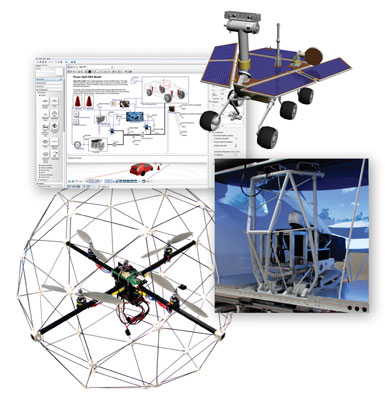Reduce development risk
Offering both tools and services, Maplesoft Engineering Solutions help engineers validate and optimise product designs, produce extremely fast simulation code for hardware-in-the-loop and other types of simulations where execution speed is critical, and develop specialised analysis and design calculation tools.
Maplesoft Engineering Solutions also support model development for model predictive control, an advanced technique used to represent the behaviour of complex systems.
The Maplesoft Engineering Solutions team has expertise in a variety of engineering fields and extensive experience in model-based design. By leveraging the unique benefits of MapleSim and Maple, advanced engineering design tools from Maplesoft, they help engineers reduce development risk, create better products, and get to market faster. MapleSim and Maple are also available for engineers to use directly in their own development projects.
MapleSim is an advanced system-level modelling and simulation tool from Maplesoft that applies modern techniques to dramatically reduce model development time, provide greater insight into system behaviour, and produce fast, high-fidelity simulations. MapleSim is based on Maple, the technical computing software for engineers, mathematicians, and scientists.
Maplesoft Engineering Solutions are used by customers in a variety of domains, such as electric and hybrid-electric vehicles, ground transportation, space systems, batteries, mining, and manufacturing. Past projects include a robotic arm for drilling in mines, a motion platform for driving simulators, a torsional vibration analysis tool for marine drivelines, batteries for hybrid-electric vehicles, and dialysis machines.
While projects vary greatly, they frequently involve the following: High performance plant models for hardware-in-the-loop (HIL) applications. Generating high-fidelity plant models from many system design tools typically results in code that is not fast enough for real-time, HIL execution, and engineers often perform a trade-off between model fidelity and performance.



